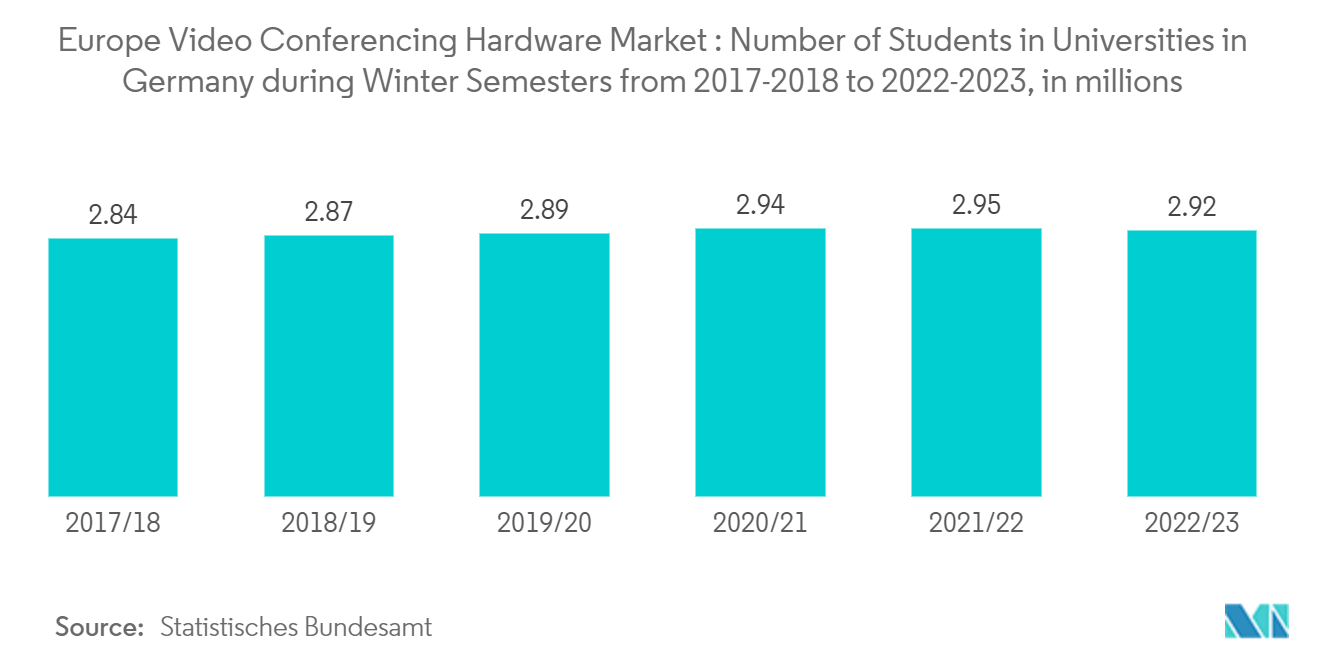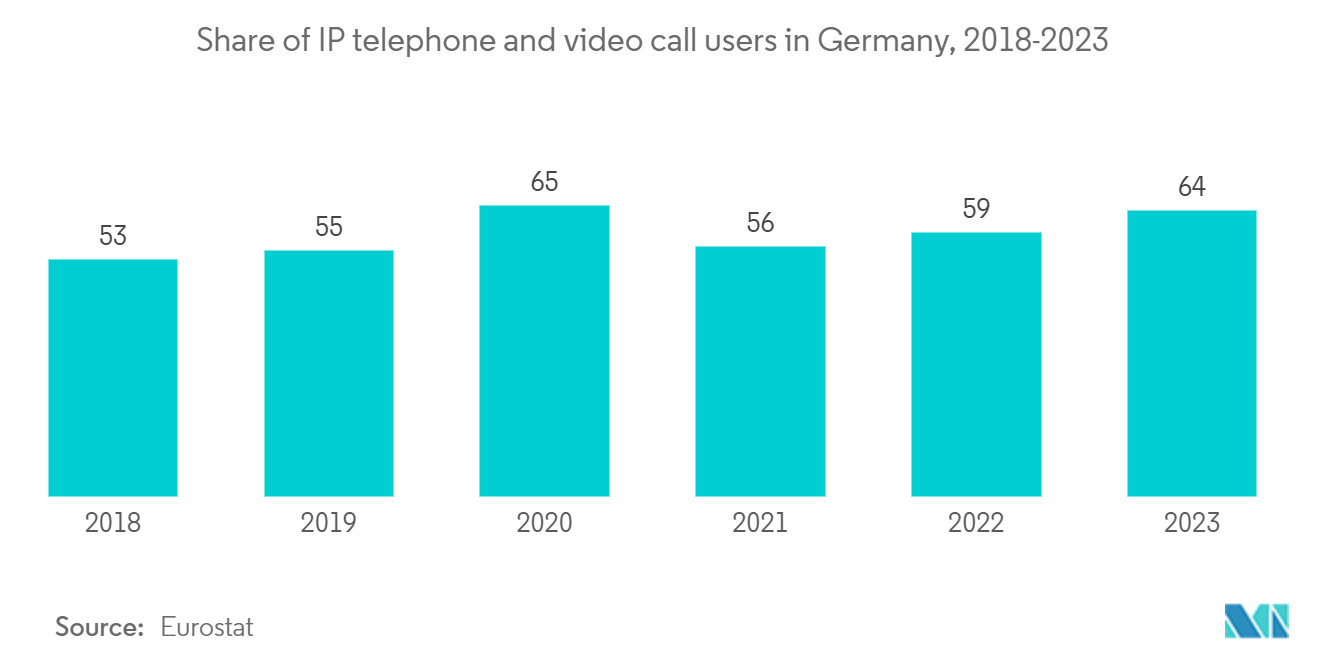Market Trends of Europe Video Conferencing Hardware Industry
Institutions are Expected to Hold Significant Market Share
Europe is home to the world's best universities, including the University of Oxford, the University of Cambridge, the University College London, and Imperial College London. The adoption of video conferencing hardware in European institutions such as schools, colleges, and universities has significantly increased, accelerating the shift to online learning.
Universities and higher education institutions in Europe are mainly focusing on adopting the latest technologies and offering online and distance learning to international students. Thus, universities and institutions invest in high-quality cameras, microphones, and speakers to enhance video and audio quality in online lectures and seminars. These cameras range from basic webcams to DSLR cameras with HDMI outputs, allowing clear and crisp video transmission. The continuous development in camera and audio technology further supports market growth.
As hybrid becomes the new norm, teachers must be ready to set up remote classes from anywhere, and flexible technology helps them connect to students where they teach. Video conferencing hardware is used for live virtual classes, one-on-one meetings with teachers, group study sessions, and tutoring sessions. This helps to improve student-teacher communication and supports students' progress in their coursework.
Further, many European universities are integrating video conferencing hardware with learning management systems to streamline the virtual learning experience. For example, at Heidelberg University, the demand for digital events in research, teaching, and administration was met by the video conferencing systems provided by the university. In addition, the European University Institute (EUI) stated that as of January 2023, conference, meeting, and seminar rooms were equipped with a video projector and screen, laptop, speakers, and microphones.

Germany is Expected to Hold Significant Market Share
With the rise of a hybrid work environment in which employees split their time between working remotely and in the office, there is a growing demand for video conferencing hardware that supports seamless collaboration between remote and on-site team members. The Ifo Institute for Economic Research, based in Munich, stated in a recent study that around 24.1% of workers in Germany worked at least partially from home in February 2024.
As one of Europe's largest countries, Germany ranked sixth in the Global Remote Work Index 2023 (GRWI). Although the country will become less accessible to international workers after Brexit, it is an attractive option for remote work. In addition, businesses nationwide are focusing on hybrid working to increase employee productivity.
German organizations are gradually adopting a working model that effortlessly combines at-home, in-office, and on-the-go work culture and are focusing on investment in end-user technology, which supports this pattern. The 2023 ISG Provider Lens Future of Work Services report for Germany suggests that businesses concentrating on workplace well-being and employee experience through hybrid reality will be better positioned to attract and retain the talent necessary for success.
Germany is home to around 420 higher education institutions and universities. During the 2022-2023 winter semester, 423 higher education institutions were in Germany. Institutions are widely adopting video conferencing hardware to support online teaching. For instance, Berlin International University of Applied Sciences implemented video conferencing hardware across its colleges and departments to support remote seminars, lectures, and meetings. The university adopted Logitech Rally, which supports a hybrid learning model that transformed lectures and seminars at BI into video conferencing meetings, providing a contemporary experience for all students and teachers.
With the advent of cloud computing and other hosted technology services, there has been a surge in the use of remote working, mobile collaboration, and videoconferencing. With advanced tools available across a wide range of endpoints, such as mobile, room-dedicated collaboration systems, and desktops, communication is becoming lighter and more agile, bringing together the best and most important elements of collaboration regardless of the user’s location.


